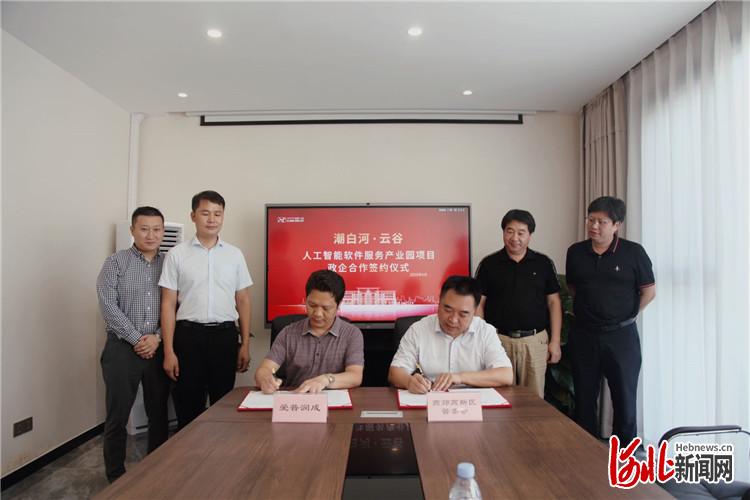人工智能 跟踪(人工智能的应用)
- 百科
- 2021-10-18
- 17448

(华盛顿特区)如果一架美国无人机在敌方武装车辆穿越崎岖地形、进入市区并靠近易受攻击的目标区域时,目标突然离开传感器的视野,变得似乎无法追踪,那该怎么办?目标丢失了吗?进攻性行动被破坏了?
支持美国军事服务的技术公司CACI正在开发的新兴的人工智能跟踪技术。现在,快速成熟的算法能够以闪电般的速度同时分析大量的变量,识别目标的轨迹,并在目标离开传感器视野后继续跟踪目标。这种技术能力,通过自动化、机器学习和人工智能授权算法,将评估速度、轨迹、目标物体本身和一系列其他因素,来计算出继续一条轨迹的方法。这自然会为侦察机、无人机以及其他类型的SIGINT资产提供新的手段。
CACI的人工智能研发经理布莱恩·诺(Brian No.)表示,新系统主要用于来自无人机或战术中高空ISR平台的视频流,将实现新型的“持续跟踪”。
“这是一种自动处理视频流的功能,然后观察视频中正在进行的高水平活动。我们已经开发出了高达特定TRL水平的全动态视频分析能力,并与客户合作,在不同的环境下评估这项技术,”布莱恩·诺在接受TNI采访时说。
布莱恩·诺解释称,该系统还没有集成到机载平台上,但一旦当前的软件开发继续发展,可能很快就会实现。该系统在一定程度上依赖于一个众所周知的过程的现代化升级,现在被用于全动态视频分析,称为任务、收集、处理、开发、传播。全动态视频分析,有时使用人工智能技术来快速识别、分析、组织和传输数据,存在于军队的许多地方。最重要的是,这类技术在涉及到战区决策,就其战术相关性而言,这意味着人类操作员不必通过数小时的视频流来识别关键的、时间敏感的关键时刻。它可以极大地提高它的实时性能。
CACI所说的新系统目前还没有开发出来,它所做的是保持连续准确跟踪物体或目标,随着它的出现和消失,这会极大地改善指挥和控制。不仅如此,这种应用程序自然会改善目标定位,因为它可以更好地预测目标“将要到达”的位置,当然除了跟踪目标的位置之外。例如,机器学习应用程序可以从对象先前的运动中获取信息,将其集成到现有数据库中,并执行分析,以快速估计下一步可能发生的位置。当然,这就是人工智能的工作原理,它从现有数据库中获取新数据,收集、分析并传播最需要的、最准确的信息。实际上,它执行分析,自主地做出一些决定,并迅速地为人类决策者提供精简、高效的信息。
New Drone Attack AI Tech Tracks "Out of View" Targets(Washington, D.C.) What if a U.S. drone was closely tracking an armed enemy vehicle as it transits rough terrain, enters urban areas and comes closer to vulnerable target areas when, all of a sudden, the target leaves a sensor’s field of view, becoming seemingly un-trackable? Is targeting lost? Are offensive operations compromised?
Not so fast, according to emerging AI-enabled tracking technology now being developed by CACI, a technology firm supporting the U.S. military services. Fast-maturing algorithms are now able to analyze a host of variables at one time, at lightning speed, to discern a target's trajectory and continue tracking an object even after it has left a sensor's field of view. Such a technical ability, empowered by automation, machine-learning and AI-empowered algorithms, would assess things like speed, trajectory, the target object itself and a range of other factors to calculate a way to continue a track. This would naturally introduce a wide range of significant new tactical advantages for surveillance planes, drones and other types of SIGINT-assets.
The new system, which is primarily intended for video streams coming from drones or tactical medium altitude ISR platforms, would enable newer kinds of “persistent tracking,” according to CACI’s manager of AI research and development Brian No.
“This is a capability to automate the process of the video stream and then observe a high level of activity that is going on in the video. We’ve developed full motion video analytic capability up to a certain TRL level and have worked with customers to evaluate the technology in different environments,” No told TNI in an interview.
No explained that the system has not yet been integrated onto an airborne platform but could be soon, once current software development continues to evolve. The system relies in part on modern adaptations of a well known process now being used for Full Motion Video analysis called Task, Collect, Process, Exploit, Disseminate. Full Motion Video analytics, at times using AI-empowered technologies to quickly discern, analyze, organize and transmit data, exist in a number of places throughout the military. Most of all, such technology enables both efficiency and speed when it comes to warzone decision-making. In terms of its tactical relevance, what this means is that a human operator does not have to pour through hours of video streams to identify key, time-sensitive moments of relevance. It can perform that function in near real-time, massively improving the combat equation.
What CACI’s new system does, which does not yet exist, is sustain an continuous accurate track on an object or target as it comes in and out of view, massively improving command and control. Not only that, but an application of this kind naturally improves targeting as it can better anticipate a location where a target is “going to be” to a much greater extent, in addition to of course tracking where it is. Machine learning applications can, for instance, take information from an object's prior movements, integrate them into an existing database and perform analytics to quickly estimate where it is likely to go next. Of course that is how AI functions, it bounces new data off of an existing database to collect, analyze and then disseminate the most needed and accurate information possible. In effect, it performs analytics, makes some decisions autonomously, and provides human decision-makers with streamlined, efficient information… quickly.
本文由woniu于2021-10-18发表在中国AI网,如有疑问,请联系我们。
本文链接:https://www.chinaai.com/baike/12442.html


















